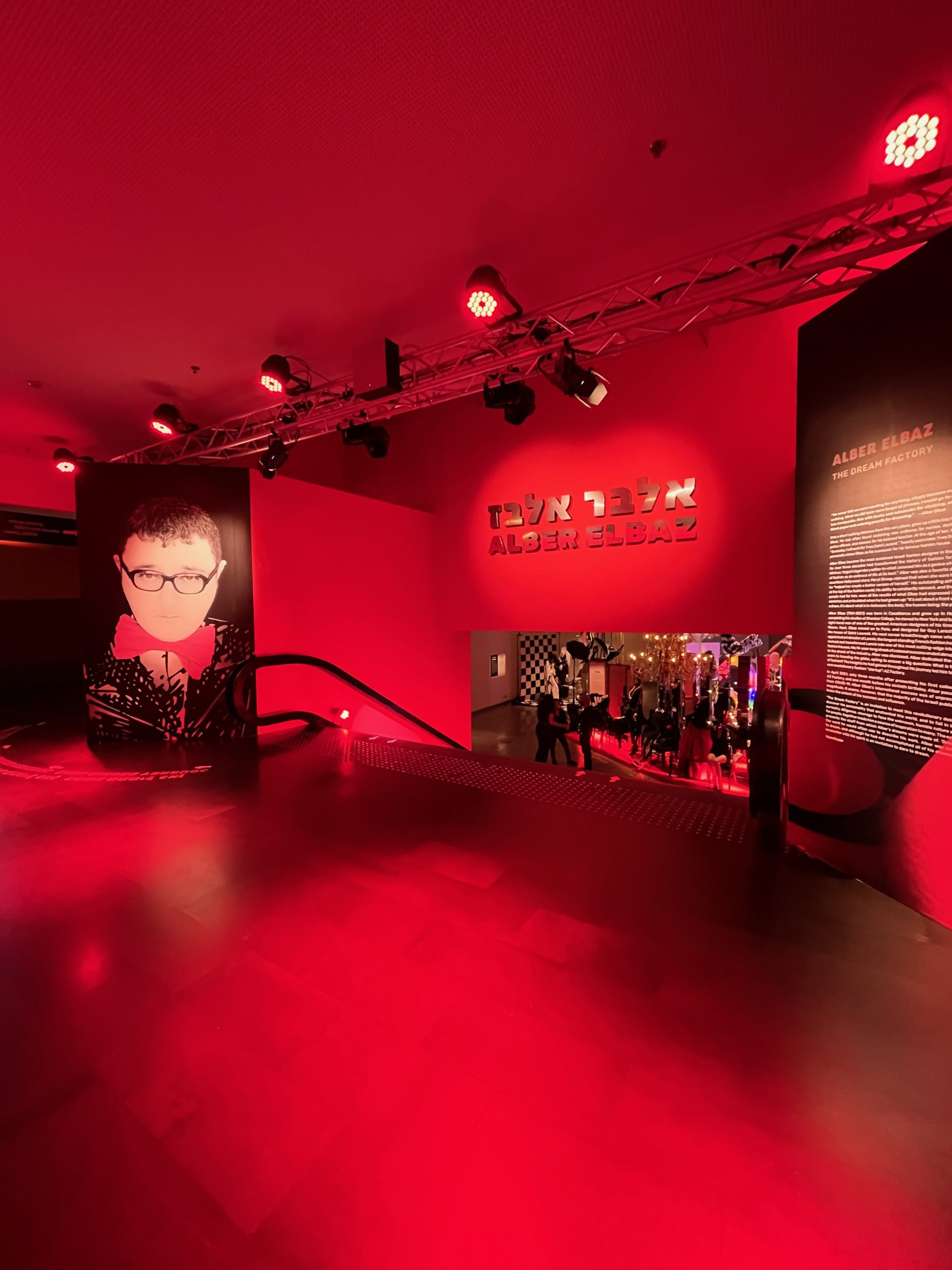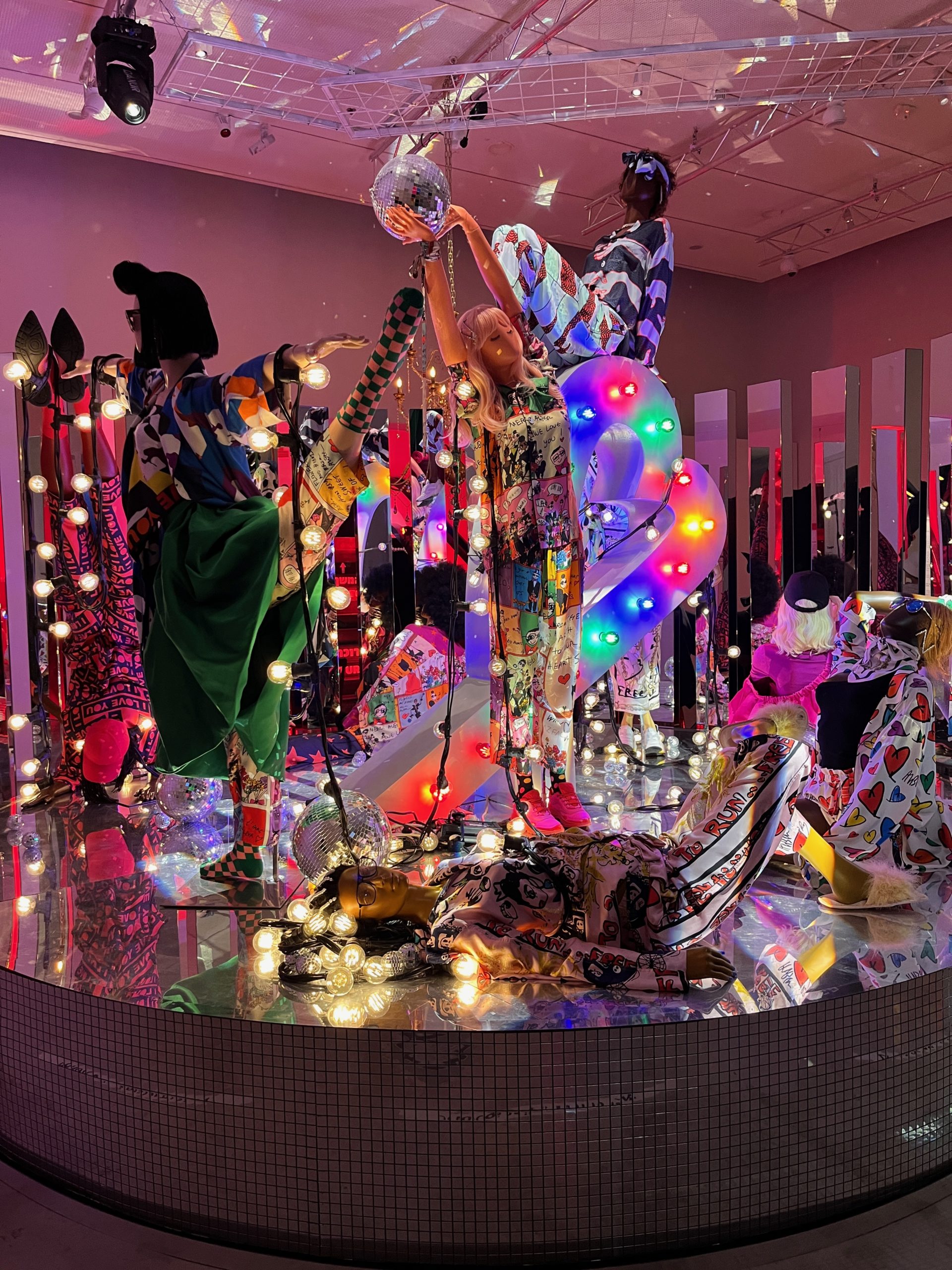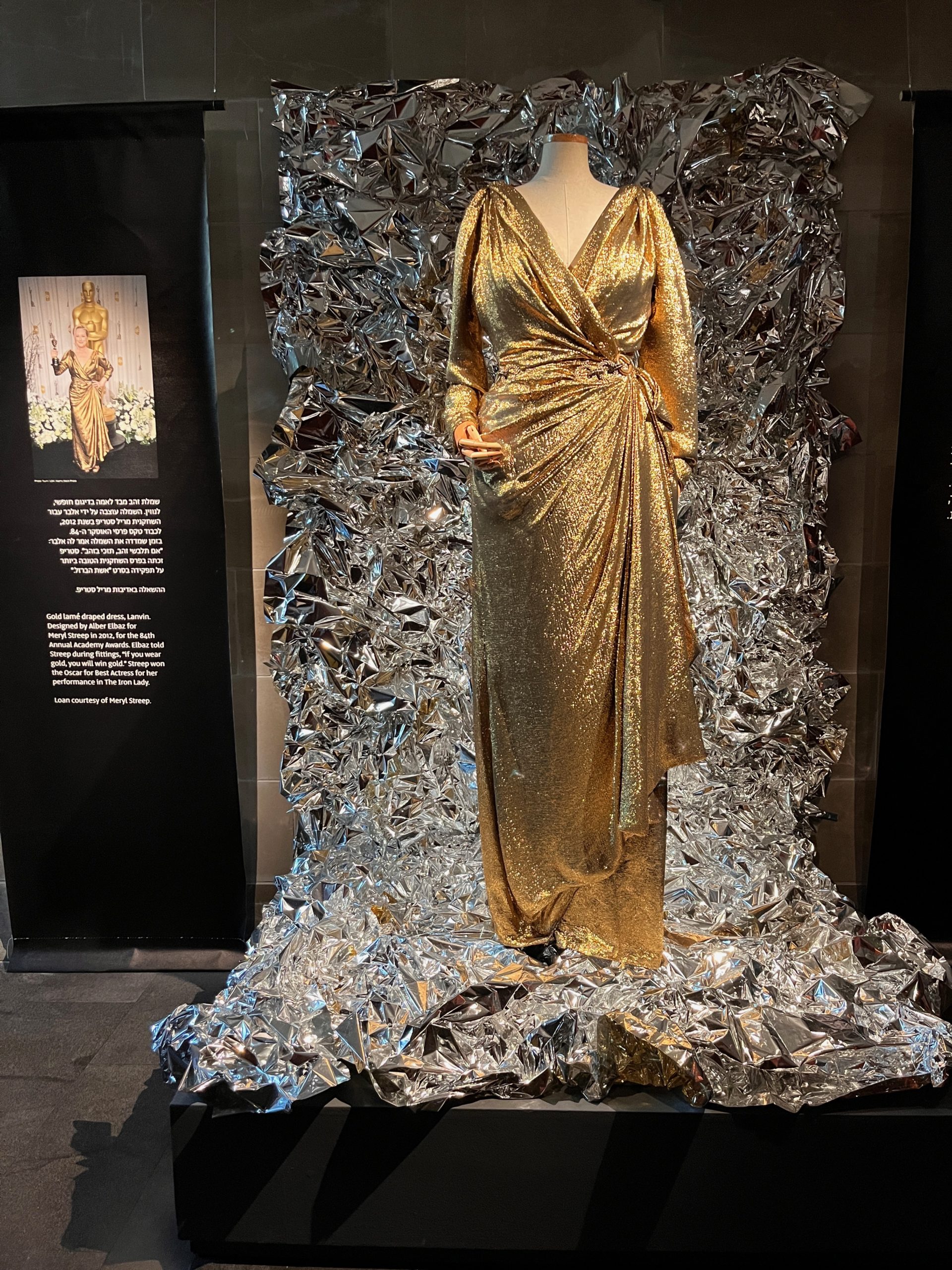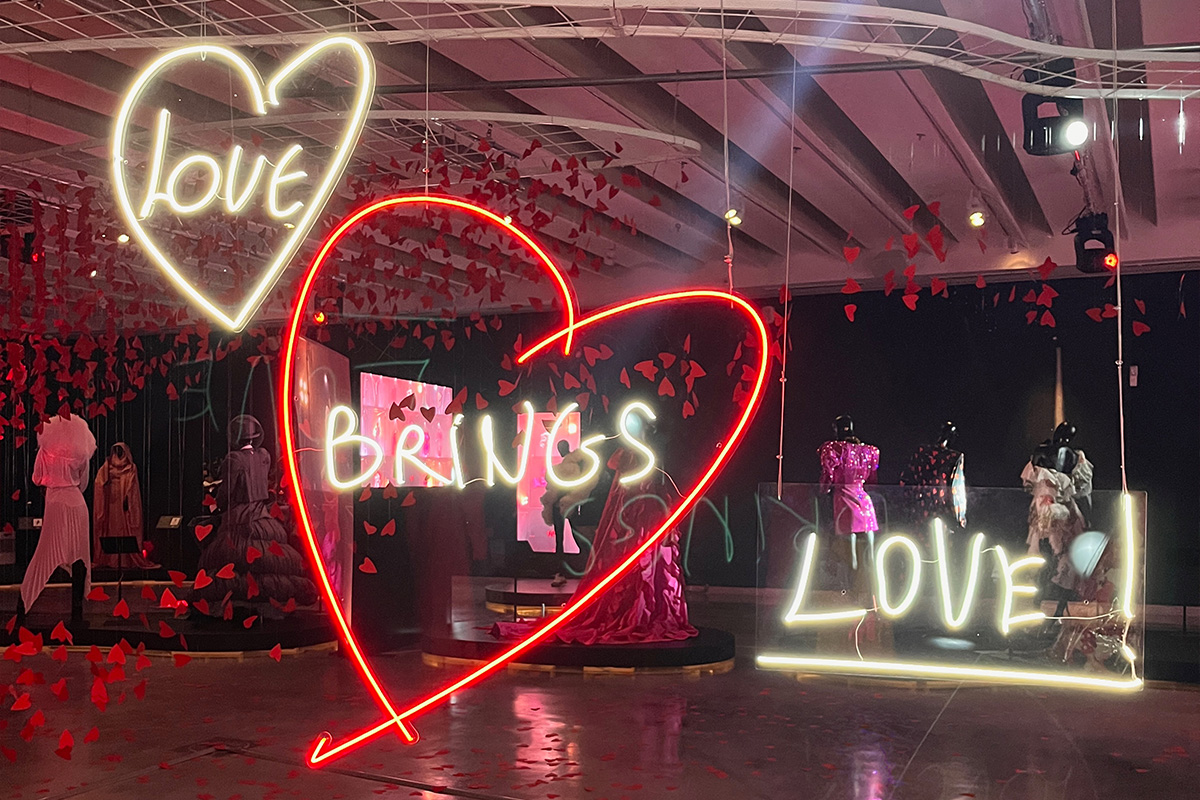Fashion designer Alber Elbaz is celebrated in a new exhibition, “Alber Elbaz: The Dream Factory” at the Design Museum in Holon, Israel. It is the perfect location for the first extensive exhibition dedicated to the late designer, who prematurely passed away from COVID in 2021; he grew up in this town before conquering the international fashion world, heading the house of Lanvin for 14 years.
Alber Elbaz was born in Casablanca, Morocco in 1961, and when he was still a baby, his Sephardic Jewish family moved to Israel. After staying for a few months in Jaffa and two years in a transition camp in Bat Yam, they settled in Holon, south of Tel Aviv. Although Elbaz later lived in New York and Paris and spent most of his life outside Israel, he always identified and presented himself as Israeli.

The first room of the exhibition is dedicated to four central cities that shaped his creative world and influenced his work: Holon, where he was raised and buried, New York, Paris and Tangier, where he loved to travel. It is filled with the fun and joyful creations of his namesake brand, AZ Factory, which he founded in 2019 in partnership with Richemont, one of the largest luxury goods companies in the world.
The next room illustrates his journey in the fashion world through family photos, sketches and personal objects, like his box of colored pencils and medals he received from the French government. All of this adds a personal touch to the artistic world of the couturier.
Elbaz started showing his interest in fashion during childhood, when he would draw fashion sketches of powerful women in colorful statement designs in his notebooks. Elbaz’s mother was very supportive of his artistic talents, and their close relationship would affect and guide Elbaz for the rest of his life.
After finishing high school, Alber Elbaz studied at Shenkar College of Engineering and Design in Ramat Gan. Upon graduation, Elbaz moved to New York City with $800 that his mother gave him. To fit the American pronunciation of his name, Elbaz dropped the silent T at the end of his official name, formerly Albert. He later said that “in Judaism, by changing your name, you change your destiny.”
Three years later he landed his dream job: He was hired to work alongside Geoffrey Beene, considered by many to be the greatest living American designer of the 20th century, who was at his prime at the time. They worked together for seven years. Elbaz regarded Beene as his mentor and friend; he learned draping, pattern making and was influenced by Beene’s design philosophy to blend elegance with comfort.
In 1996, Elbaz moved to Paris, the fashion capital of the world. He first started working for Guy Laroche, yet 1998 is when Elbaz’s ultimate dream came true. He was chosen to replace Yves Saint Laurent to design his ready-to-wear line, Saint Laurent Rive Gauche, which by that time had fallen into static repetition. Magazine clippings and personal photos illustrate how Elbaz was hired by the couturier himself and became the successor of Monsieur Saint Laurent. “Yves Saint Laurent was not just any fashion house. In France it symbolizes fashion as a whole,” said Elbaz in one of his interviews. The 1990s had been a slow period for Yves Saint Laurent sales, and Elbaz brought a modern touch back to the brand and made it cool again.
However, Elbaz designed for YSL only for a year, as in 1999, the fashion house was bought by François Pinault, who also invested in the house of Gucci, creating a Gucci Group fashion conglomerate now known as Kering. Elbaz was let go and Yves Saint Laurent’s ready-to-wear line was given away to the creative reins of Tom Ford, who was also designing for Gucci.

But Elbaz believed that when one door closes, another one opens. In October 2001, he was appointed as creative director of the longest-standing fashion house of Paris, Lanvin, which had been established in 1889. With his experience bringing back the modern edge to classic fashion brands, Elbaz revived the couture house. He articulated a new femininity, a combination of elegance and simplicity with a powerful spirit. His work was a success with critics and clients, increasing brand sales and rocking red carpets and fashion editorials. In 2010, Lanvin did a collaboration with H&M, designed by Elbaz, which was a great success and introduced his whimsical, heritage-fashion-house style to mass audiences. It was sold out within hours of its launch.
Elbaz worked as a creative director of Lanvin for 14 years until his abrupt departure from the company in 2015. He dedicated the time between his exit and the launch of his brand AZ Factory to traveling, research and giving back to the community. In the exhibit, videos of his talks for fashion students are curiously presented in a room called “Food for Thought,” where a formal dinner table is set and the videos are projected onto the plates. Visitors are invited to sit down at the table and listen to Elbaz talking about the fashion industry.
This exhibit is not considered a retrospective of Elbaz’s work, but a celebration of his creativity. Still, it features some of his stunning creations, including a gold lamé dress on personal loan from Meryl Streep — the dress in which she walked the red carpet and received her Best Actress Academy Award in 2012 for “The Iron Lady!”

“Alber Elbaz is a poet and a mensch. He is an artist for whom you feel women were very important all throughout his life,” Streep said of the designer. And many who knew Elbaz personally always remember him as the kindest person in the industry. That feeling comes through in his work, translated into materials, cuts, shapes and colors.
His personal style has become iconic as well. Always wearing a tailored suit, a bow tie and glasses, he used a bow and square glasses as a shorthand for himself in his signature and in branding. These iconic artifacts are also displayed in the exhibition.
Visitors to the Design Museum Holon are lucky because they can also see a whole other show intertwined with the exhibition. “Love Brings Love” is a tribute to Elbaz organized by his partner Alex Koo in collaboration with 46 leading fashion companies, from Alexander McQueen and Dior to Schiaparelli and Versace. Every brand stuck to their DNA while featuring some signature elements of Elbaz’s unique style — vibrant colors (especially pink), bows, huge ruffles — as well as his sense of humor. This is truly a gift for the visitors; it had previously only been displayed in Paris’ Palais Galliera as a separate exhibition after a runway show took place in 2021.
The leitmotif of Alber Elbaz’s life and work was to dream, and this show certainly sparks inspiration, joy and a desire to dream! If you are in Israel before February 25, 2023, make sure you visit this exhibition to celebrate the legacy of this iconic Jewish designer.



